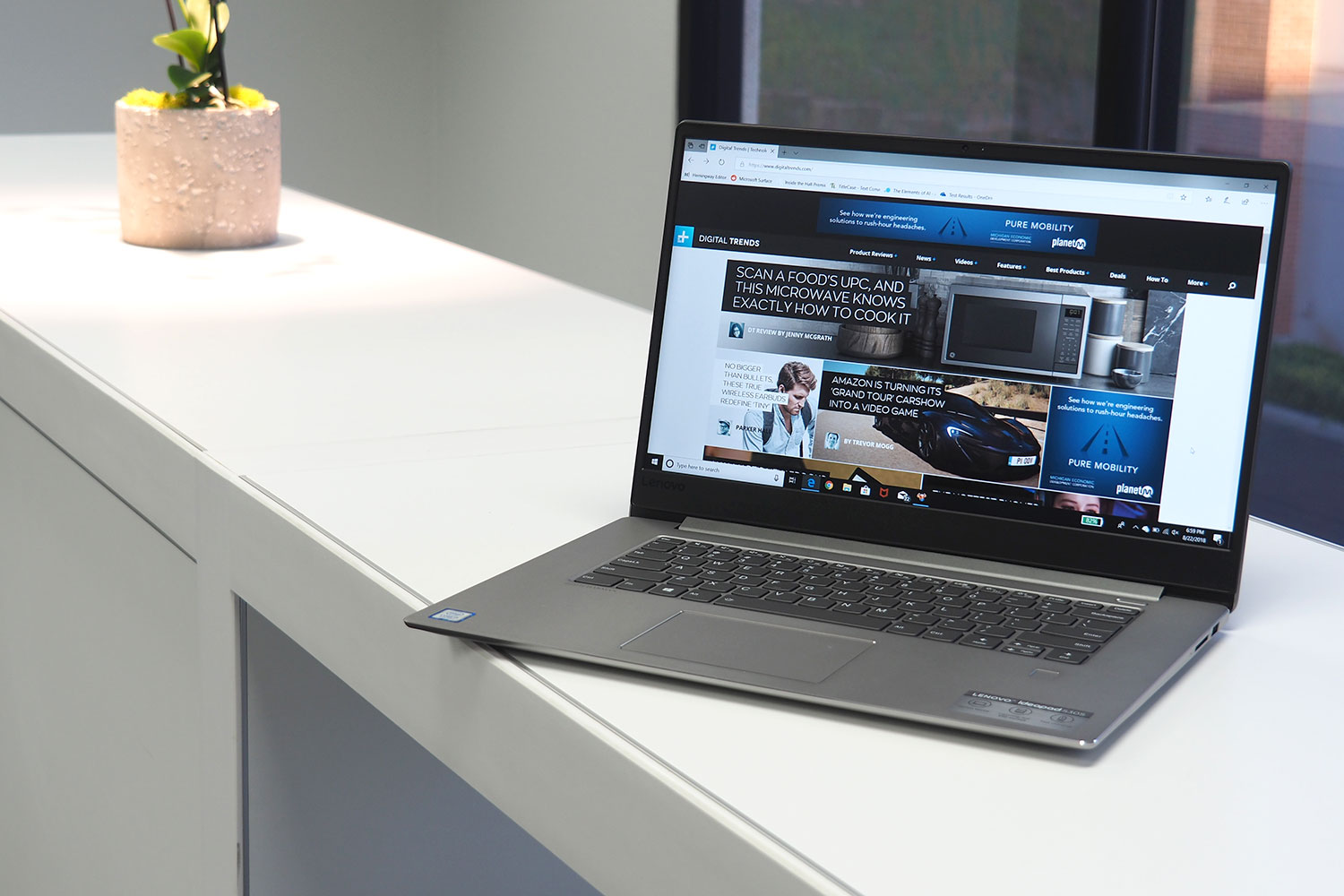
There was a time when budget notebooks were mostly indistinguishable. That is, they were usually equally bad. That’s no longer the case — today, you can spend well under $1,000 and get a notebook with excellent performance, a solid build, and good battery life. We’re not talking bargain-basement pricing here, but it’s no longer true that you need to break the bank to get a serviceable notebook.
Lenovo’s IdeaPad 530s is one of the company’s latest budget-oriented notebooks, aimed at providing value to those with less cash to spend. We’re pitting it against the Acer Aspire E 15, one of our favorite budget notebooks, to see which attempt at low-cost perfection comes closest.
Design

The IdeaPad 530s brings a solid, all-aluminum build to the budget category, with no flex in the keyboard deck or bottom of the chassis and only the slightest give in the lid. The aesthetic is laid back and conservative, centered around a Mineral Gray color scheme with only some chrome trim around the edges of the chassis and the touchpad to spruce things up a bit. All of this quality feel is jammed into a thin and light chassis, coming in at 0.66 inches thin and 3.72 pounds — quite nice for a notebook with a large 15.6-inch display.
The Acer Aspire E 15 takes a completely different tack. It’s quite thick at 1.19 inches and heavy at 5.27, and thus doesn’t even pretend to fall into the thin and light category. It’s also a mostly plastic build, with an aluminum keyboard deck adding some extra rigidity. Overall, it doesn’t enjoy quite the same structural soundness as the IdeaPad. That doesn’t mean it’s flimsy, though, and all that extra space allows for a rarity in notebooks today: A DVD-RW drive.
Both notebooks offer comfortable keyboards and touchpads that are as pleasant to use as those on much more expensive machines. And both have a wealth of connectivity options, including both USB-A and USB-C ports, HDMI ports, and more. Neither has Thunderbolt 3 support, unfortunately.
Overall, the IdeaPad gets the nod for a more modern design with small bezels against the Aspire’s massive versions, and it’s thinner, lighter, and more solidly built. But the Aspire does benefit from a chassis that offers easy access to the RAM and storage options, and so it can grow with the user.
Performance

Both notebooks utilize the outstanding Intel Core i5-8250U, an 8th-generation quad-core processor that’s both fast and efficient. Not surprisingly, they achieved similar scores in our suite of CPU benchmarks, and they’re both more than fast enough for even intensive productivity tasks.
Step beyond the CPU, though, and these two notebooks diverge. When it comes to graphics, the Aspire E 15 takes the lead by equipping a discrete GPU, the Nvidia GeForce MX150 that provides for decent entry-level gaming. The IdeaPad 530s relies on the much-slower Intel UHD 620 integrated graphics. Storage is the other area of differentiation, with the IdeaPad using a fast PCIe solid-state drive (SSD) compared to the slower SATA SSD that Acer used in the Aspire E 15.
You’re more likely to notice the much faster graphics on the Acer than you are the IdeaPad’s faster storage. That makes the Aspire E 15 the performance leader, suitable even for some entry-level gaming to offer a distraction.
Regarding display quality, both of these 15.6-inch notebooks have relatively narrow color gamuts and mediocre accuracy. The IdeaPad’s display is brighter, but the Aspire E 15 has better contrast. You’d be hard-pressed to tell the difference between them except when you’re in a bright environment, where the Lenovo wins out.
Portability

The IdeaPad is clearly the easier notebook to carry around, being about half as thick and weighing about two pounds less. It’s much easier to toss into a backpack and carry around.
But the Aspire offers a larger 62 watt-hour battery compared to the IdeaPad’s wimpy 45 watt-hour version. That results in a significant difference in battery life, with the Aspire lasting for 12 hours in our video looping test and the IdeaPad failing to make it to eight hours. It was the same story when browsing the web, where the Acer lasted for over nine hours were the Lenovo barely made it past six hours.
Simply put, if you’re going to be putting in a full day’s work, you’ll have to add some bulk to your backpack by including the IdeaPad’s power brick. You can leave that behind with the Aspire E 15, making it the more convenient notebook for true road warriors.
The Aspire E 15 is a better bang for your buck

The Aspire E 15 is a cool $600 for the same configuration, which also comes with a discrete GPU and a much larger battery. Acer charges $150 more for the Core i7 version.
The IdeaPad is prettier, more svelte, and slightly more robust. But the Aspire E 15 offers better overall performance and lasts significantly longer on a single charge. It’s also less expensive, holding onto its place as our favorite 15.6-inch budget notebook.
Editors' Recommendations
- Best Lenovo laptop deals: Save on Yoga and ThinkPad laptops
- Lenovo leaks the world’s first gaming Chromebook — but there’s a catch
- IdeaPad vs. Yoga vs. Slim vs. ThinkPad vs. ThinkBook vs. Legion: Lenovo brands, explained
- New Lenovo IdeaPads look like the Chromebooks to beat
- Lenovo’s new IdeaPad Slim 7 Carbon boasts an OLED screen with 90Hz refresh rate


